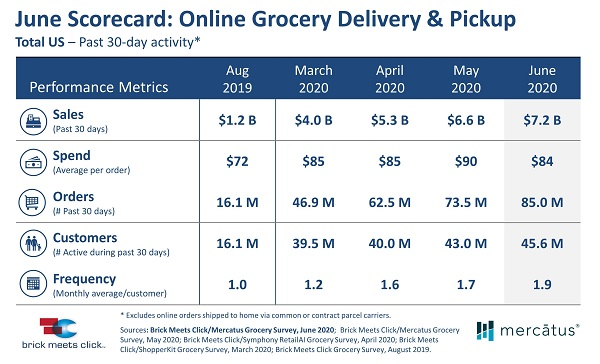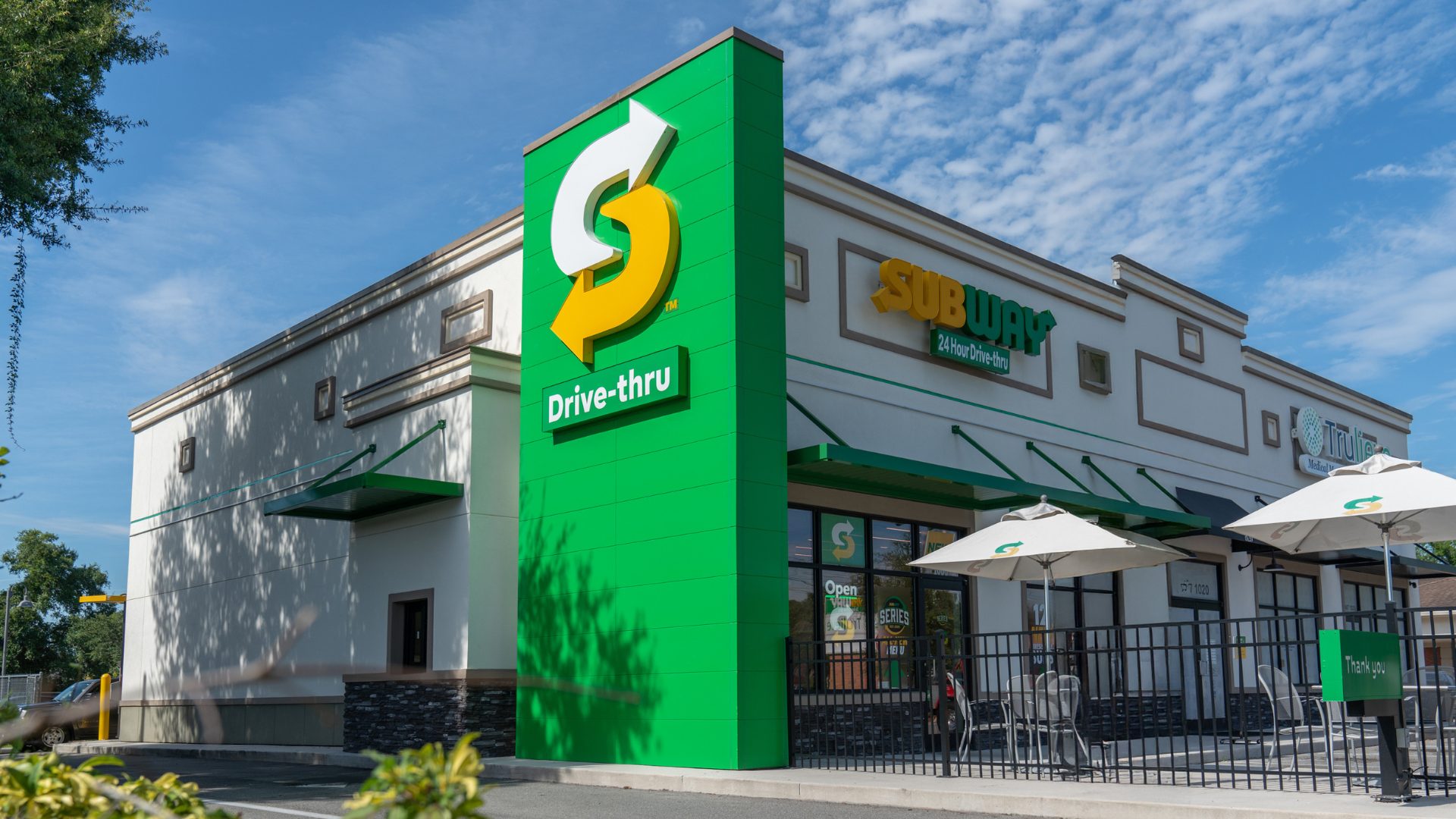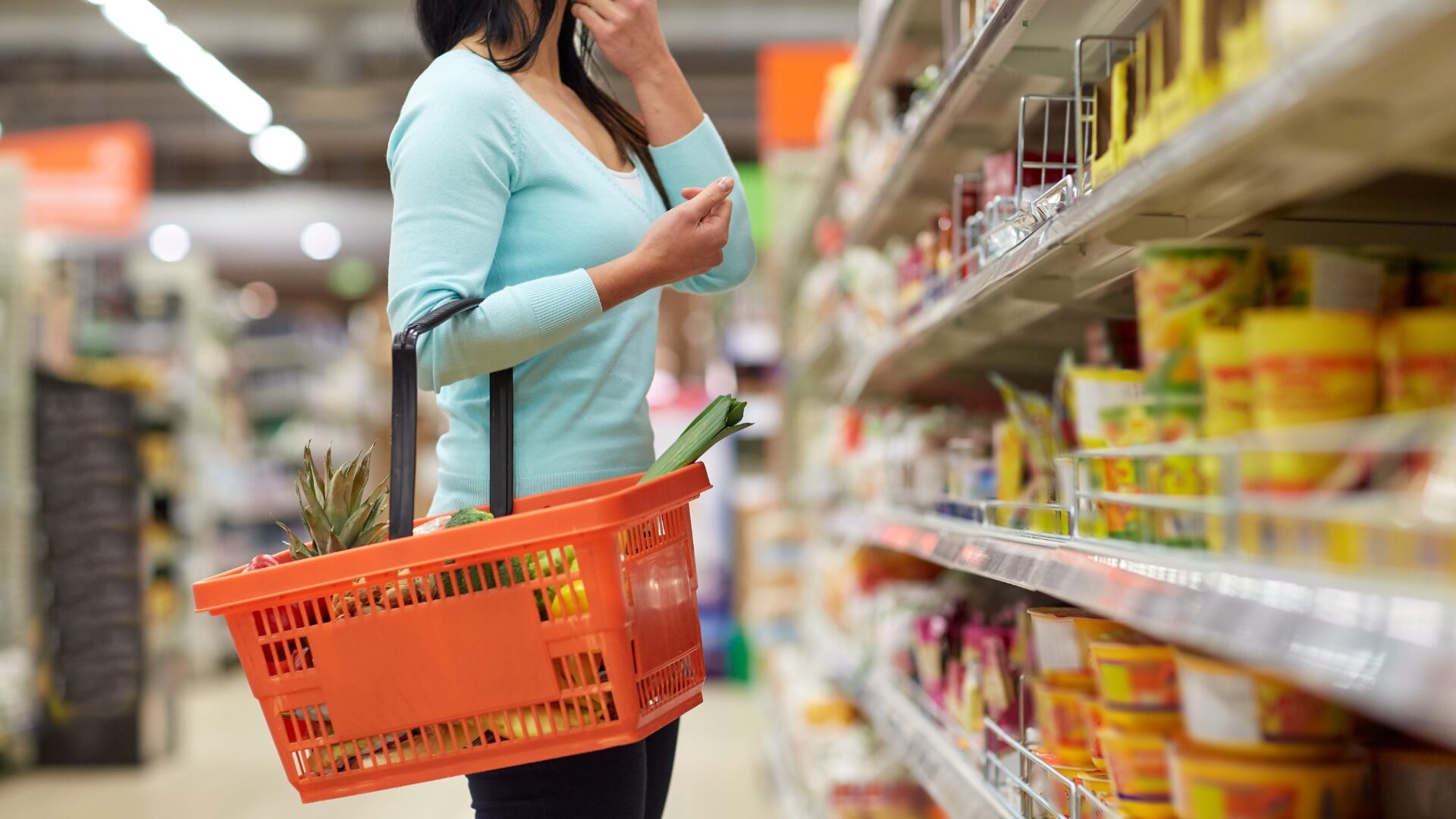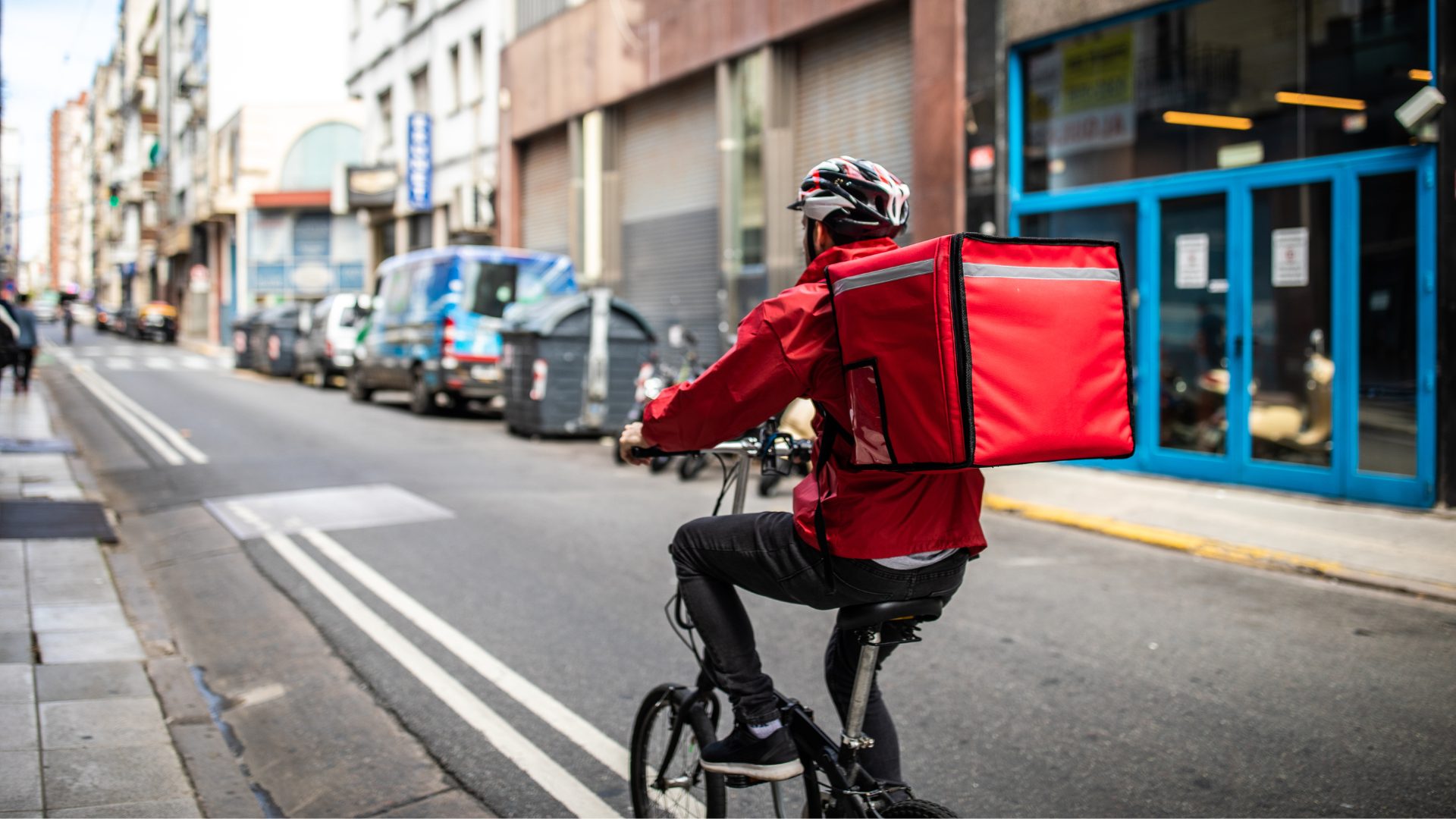Grocery shopping has evolved from a Main Street event (where we go to our local market frequently to purchase food and goods) to an order most anything, from anywhere, at any time online. Online shopping, which started off slowly, was initially an underwhelming choice for consumers. As the internet grew along with smartphones, more started to shop online.
Then came COVID-19.
Social distancing and avoiding large crowds were a hallmark for quarantined living. In response, consumers turned to online grocery shopping-many of who previously never considered it.
Jumping on the E-Commerce Bandwagon
Online grocery sales pre-COVID had been trending upward, but only accounted for a mere 3.5% of total grocery sales, according to Forrester Research.
An article published by McKinsey & Company before coronavirus became pandemic outlined the trend and mentioned the 3.5% of grocery sales that was online would rise to 10% by 2020. What a difference a few months can make.
McKinsey was optimistic about the future of online grocery sales, writing: “Online grocery on its own is not new news to retailers and the broader consumer community, but the current pace of investment and innovation is unprecedented. We believe that this will continue to be a supply-driven market, meaning that the actions retailers and other players in the grocery ecosystem take now will define what the industry becomes going forward.”
According to eMarketer, e-commerce grocery sales were forecasted to grow from $22.63 billion in 2019 to $40.4 billion by 2020. But this was also before COVID.
The coronavirus added an unplanned accelerant to online grocery sales as consumers were forced to sample the convenience of ordering online and having either a parcel delivered or picking up an already gathered grocery list.

(Source: Brick Meets Click)
Brick Meets Click reported online grocery sales soared in the initial months of the pandemic in North America and Europe. Last August-less than one year ago-online grocery sales were about $1.2 billion. With the pandemic, they were $4.0 billion in March, $5.3 billion in April, $6.6 billion in May, and $7.2 billion in June. Total orders are soaring as well. Aug. 2019 had approximately 16.1 million online orders. By May 2020, online grocery orders reached a whopping 73.5 million and in June a further 85 million.
And the trend is spilling over to global markets in regions such as Russia. Sbermarket, a Russian e-commerce company that sells grocery products, expects an 11-fold growth in its 2020 levels, driven by the pandemic, reported The New York Times.
Though late to the game, German-based discount supermarket chains Aldi and Lidl are also pushing forward to meet the demand for online grocery shopping. For example, Aldi plans to extend its curbside pickup to about 30% of its U.S stores by mid-summer 2020, reported The New York Times (June 19).
A Techno-Boom for Online Grocery Ordering and Fulfillment?
It’s not only that food retailers are retooling their customer-facing shopping options via e-commerce. New equipment and technology are helping them do it.
For instance, interest is rising in swarming robots. Swarm robots act like insects or birds who work in a swarm and remarkably communicate with each other in motion. They are programmed to read the motion of other robots and not interfere and perform a task that is mutually exclusive from another robot. Swarm robots allow orders to be filled accurately and rapidly without nearly as many humans per volume of product sold.
The UK grocer Ocado is the poster child for swarm roots. Ocado only sells online and fulfills all its orders from a central warehouse using swarm robots. Customers can shop with Ocada via a mobile phone app or on the web and sift through Ocado’s 55,000 item catalog of goods. Using the robots, Ocado can fulfill an order of about 45 to 50 items in a matter of minutes. Customers then find an available slot on a van that will deliver multiple orders-all optimized by route and time.
Another concept that has been, and will likely continue to emerge, are micro-fulfillment centers. With such centers, a dedicated location is set up as a staging operation, removed from the traditional store, where orders are aggregated and staged for pickup. It frees up backroom space at regular stores and assigns a dedicated force to the fulfillment center. Albertsons and Walmart are already onboard with such fulfillment centers. Safeway and Jewel-Osco are also investing in projects to test them.
Food via E-Commerce: Now the Major Leagues?
What the coronavirus pandemic has done for food consumers and their shopping experience is inserted a forcing function: Folks who never would have tried purchasing food from their computer or a smartphone app now were somewhat forced to try it given the pandemic. They got their feet wet and saw how convenient it can be, without much additional cost, if any.
Tim Steiner, CEO of Ocado, may have said it best, “What’s going on now with the coronavirus is e-commerce grocery is not going be a minority sport in our field. It’s not going to grow to 10% or 15% and stop. It’s going to become mainstream distribution of groceries, over time.”
Additionally, many consumers are avoiding setting foot in a brick-and-mortar store because of the exposure and the contact risk. The big question that looms is whether such change in buying behavior and online sales will maintain.
“Whether these particular impacts of the pandemic are only temporary remains to be seen,” said Joseph Clayton, president and CEO of International Food Information Council. “But it’s hard to think of another recent event that has had such far-reaching effects, and in such a short period, on how we purchase, prepare and consume foods and beverages.”
Going Forward
Retailers should offer a simple and seamless e-commerce experience, reported Harvard Business Review (July 6). Customers won’t tolerate sub-par digital shopping experiences they may have before the pandemic.
Sites should be mobile-responsive, offer integrated services such as “buy online pick up in store,” and deliver consistent and reliable digital experiences across devices and channels.
Although most brick-and-mortar retailers usually try to replicate their in-store experience online, this should not always be the case. Customers don’t expect a virtual experience to be like an in-person one. It is key to invest in some unique capabilities of digital, including real-time inventory management, predictive analytics, AI-powered search, and personalization and co-creation functions.
By Jim Romeo, a freelance writer for business and technology topics. Reach him at freelancewriting@yahoo.com.







